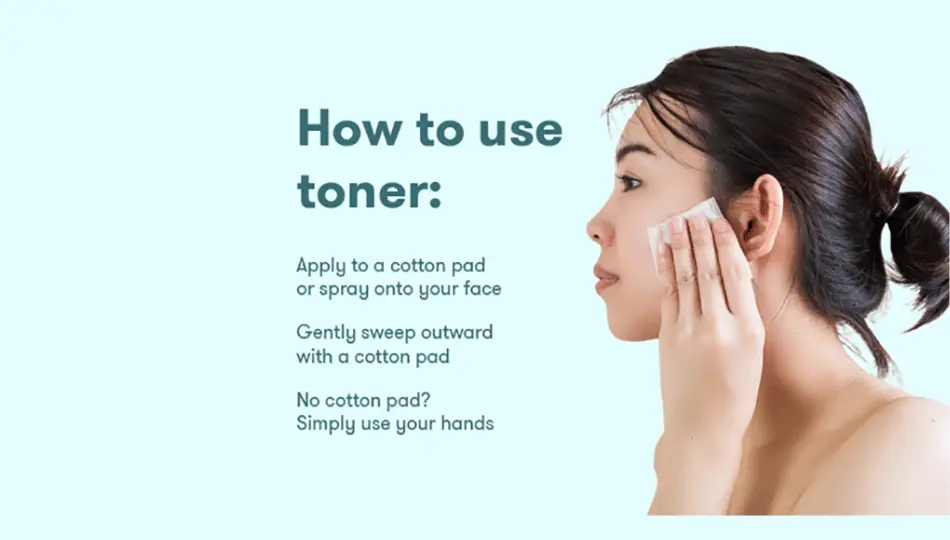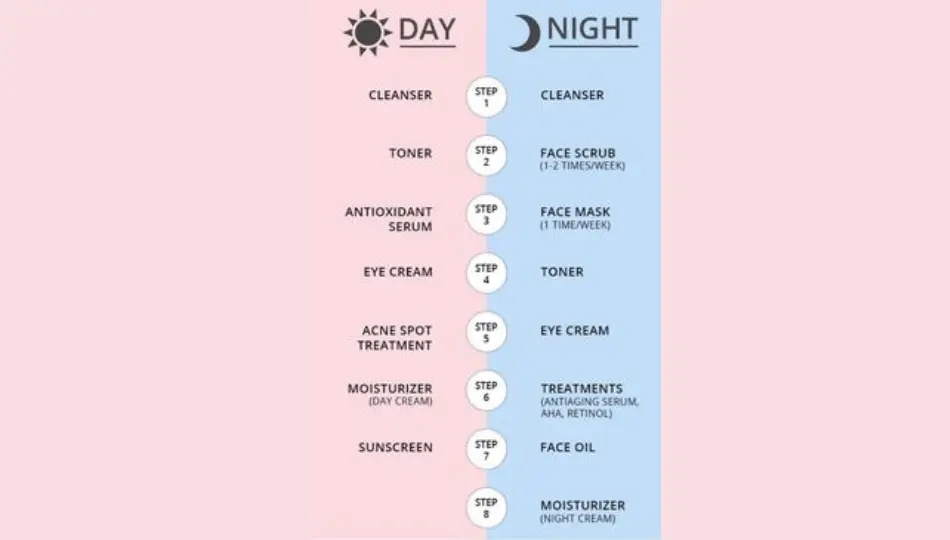I used to think toners were just fancy water in a bottle. But after struggling with breakouts and dryness, I finally gave them a try. And let me tell you—toners completely changed my skincare game! If you’ve ever wondered, what is a skin care toner, you’re in the right place. Let’s break it down in simple terms and find out why this skincare step is a must.
What Is a Skin care Toner

Toners are water-based liquids used after washing and before moisturizing. Its main goal is to balance the skin's pH, eliminate pollutants, and prepare it to absorb serums and moisturizers. To address hydration, acne, and aging, modern toners contain hyaluronic acid, salicylic acid, and vitamins.
Why Toner? Let’s Break It Down!
You may be familiar with cleansers and moisturizers, but what is a skin care toner? Follow your face wash with toner, your skin's greatest buddy. This lightweight liquid helps:
- Removing debris overlooked by the cleaner.
- Maintain skin pH balance (more on that later).
- Prepare skin for enhanced serum and moisturizer absorption.
I avoided toner because I believed it was extra, but after using it, my skin was softer and brighter. I guarantee it's worth 10 seconds!
Read also: My Preppy Skincare and Makeup Routine
Core Benefits of Using a Toner

Toners may alter your skin's health and look, not merely add another step to your skincare routine. Include a toner in your everyday routine for these key benefits:
1. Restores Skin’s pH Balance
-
Why It Matters: High-pH cleansers can alter the skin's acid layer (ideal pH: 4.5–5.5). Dryness, irritation, and breakouts can result from this imbalance.
-
How Toners Help: Toners regulate the skin's pH to avoid acne and irritation.
2. Deep Cleansing and Impurity Removal
-
Why It Matters: Skin can retain debris, oil, and makeup after cleaning, blocking pores and causing outbreaks.
-
How Toners Help: Toners remove pollutants and clean skin like a second cleansing. Heavy makeup wearers and contaminated residents need this step.
3. Improves Product Absorption.
-
Why It Matters: Exactly treated skin maximizes the advantages of serums and moisturizers by taking in them more easily.
-
How Toners Help: Toners smooth the surface of the skin by moisturizing and softening it, therefore enabling later treatments to penetrate deeper and act more effectively.
4. Provides Targeted Treatment
-
Why It Matters: Toners may provide active components straight to the skin and different skin types and issues call for different treatments.
How Toners Help:
- Hydration: Glycerin fill and hydrate dry skin; ingredients like hyaluronic acid do same.
- Exfoliation: Gentle exfoliation with AHAs (alpha hydroxy acids) and BHAs (beta hydroxy acids) unclogs pores and enhances texture.
- Acne Control: Salicylic acid and tea tree oil lower inflammation and fight breakouts.
- Anti-Aging: Vitamins C and niacinamide boost suppleness and combat free radicals.
5. Soothes and Calms the Skin
-
Why It Matters: Aggressive skincare products, extreme weather, and environmental stresses can irritate and inflame the skin.
-
How Toners Help: Anti-inflammatory ingredients like green tea, chamomile, and aloe vera calm redness, ease irritation, and help to produce an even complexion.
Read also: When To Put On Eye Cream In Skincare Routine
When to Use Toner: Day or Night? Let’s Settle This!

You can use toner both morning and night! Here’s my routine:
-
Morning: After washing my face, I pat on toner to refresh my skin before sunscreen.
-
Night: I use it to wipe away makeup residue after cleansing.
If your skin feels dry, try using it just once a day. Listen to your skin—it knows best!
My Top Toner Application Tips for Perfect Skin
I’ve tried everything from cotton pads to spray bottles. Here’s what works:
-
Dampen a cotton pad and swipe gently over your face.
-
Use your hands if you’re in a hurry—just pour a little toner into your palms and press it into your skin.
-
Layer it! If your skin feels dry, apply toner 2-3 times for extra hydration 6.
Avoid rubbing—your skin is delicate!
7 Types of Toners for Every Skin Type
Toners are not created equal; different skin types and concerns require different formulations. What is a skin care toner? It is a liquid that balances skin pH, removes impurities, and prepares it for serum and moisturizer absorption. Here are the different toners for different skin types and their benefits.
1. Hydrating Toners
Best For: sensitive, dry, or dehydrated skin.
Key Ingredients:
- Attracts and holds moisture with hyaluronic acid.
- Glycerin ( locks in hydration).
- Calms and soothes from aloe vera.
Benefits:
- Softens and moistens the skin.
- Fortifies the skin barrier.
- Lessens inflammation and redness.
Examples:
- Hada Labo Gokujyun Lotion for Hydration.
- Skin Refiner Made with Laneige Cream
2. Exfoliating Toners
Best For: Especially oily, congested, or acne-prone skin.
Key Ingredients:
- For surface exfoliation, AHAs—alpha hydroxy acids like glycolic acid—rule.
- For thorough pore cleaning, BHAs—beta hydroxy acids like salicylic acid—have great effect.
- PHA (gent exfoliation polyhydroxy acids).
Benefits:
- Cleanes pores and removes dead skin cells.
- Changes skin tone and texture.
- Cures blackheads and acne.
Examples:
- Two percent BHA liquid exfoliator from Paula's Choice Skin Perfecting.
- The Regular Glycolic Acid 7% Toning Solution.
3. Balancing Toners
Best For: Combining or normal skin.
Key Ingredients:
- Witch hazel balances oil output.
- Niacinamide helps suppleness and controls sebum.
- Rose water hydrates and calms.
Benefits:
- In the T-zone, regulates extra oil.
- Hydrates dry places.
- Preserves general equilibrium of the skin.
Examples:
- Thayers Witch Hazel Toner is here.
- Deep Hydration Toner for Fresh Roses.
4. Soothing Toners
Best For: Sensitive, agitated, or offensive skin.
Key Ingredients:
- Calms and repairs from Centella asiatica.
- Chamomile lowers redness.
- Green tea (antioxidant- and anti-inflammatory).
Benefits:
- Lowers inflammation and redness.
- Reinforces the skin barrier.
- Guards against environmental demands.
Examples:
- COSRX Centella Water Toner free of alcohol.
- Klairs Supple Toner Unscented Preparation Guide
5. Astringent Toners
Best For: Very greasy or acne-prone skin; use carefully.
Key Ingredients:
- alcohol controls grease and closes pores.
- Witch hazel—astringent qualities.
- Antidacterial and anti-inflammatory tea tree oil.
Benefits:
- Decreases gloss and surplus oil.
- Reduces the impression of pores.
- Helps stop outbreaks.
Caution: Can be drying, so use only 2–3 times a week.
Examples:
- The Witch Hazel Toner from Dickinson.
- Mario Badescu Witch Hazel and Rosewater Toner.
6. Anti-Aging Toners
Best For: Mature or aging skin.
Key Ingredients:
- Vitamin C increases collagen brightness.
- Peptides (boost collagen synthesis).
- Fermented ingredients enhance texture and suppleness.
Benefits:
- Lessens fine lines and creases.
- Increases skin elasticity and suppleness.
- Accentuates dark skin.
Examples:
- SK-II Facial Treatment Core Essence.
- First treatment essence of Missha Time Revolution.
7. Probiotic Toners
Best For: All skin kinds, even delicate or barrier-damaged ones.
Key Ingredients:
- Probiotics help the skin's microbiota.
- Prebiotics (eat beneficial bacteria).
- Strongen the skin barrier using ceramides.
Benefits:
- Preserves and repairs a strong skin barrier.
- Lessens sensitivity and annoyance.
- Enhances general skin conditions.
Examples:
- Tower 28 SOS Daily Rescue Spray.
- Mother Made Probiotic Toning Balancing Agent.
Read also: What Is An Emulsion In Skincare
How to Choose the Right Toner for Your Skin Type
- Identify Your Skin Concerns: Deal with dryness, oiliness, acne, or aging?
- Check the Ingredients: Search for activities targeted for your particular requirements.
- Avoid Irritants: If you have sensitive skin avoid alcohol, synthetic scents, and strong astringents.
- Patch Test: Before full use, always test a new toner on a tiny area.
Quick Toner Selection Guide by Skin Type
|
Skin Type |
Recommended Toner Type |
Key Ingredients to Look For |
|
Dry/Dehydrated |
Hydrating Toner |
Hyaluronic acid, glycerin, aloe vera |
|
Oily/Acne-Prone |
Exfoliating or Astringent Toner |
Salicylic acid, witch hazel, |
|
Combination |
Balancing Toner |
Rose water, green tea, |
|
Sensitive |
Soothing Toner |
Centella, chamomile, panthenol |
|
Aging |
Anti-Aging Toner |
Vitamin C, peptides, ferments |
|
Barrier-Damaged |
Probiotic Toner |
Probiotics, ceramides, prebiotics |
Top Toner Recommendations by Skin Type
-
Dry Skin: Refined Laneige Cream Skin Tone.
-
Oily Skin: Choice Skin Perfecting 2% BHA Liquid Exfoliator by Paula.
-
Combination Skin: New Rose Deep Toner for Hydration.
-
Sensitive Skin: Klairs Supple Toner Fragrance-free Preparation Guide
-
Aging Skin: SK-II Facial Treatment Basic Essence.
-
Barrier Repair: Tower 28 SOS: Daily Rescue Facial Spray.
Step-by-Step Application Guide: How to Use a Toner Correctly
Use a toner for a simple yet beneficial skincare modification. Still, how you use it tremendously affects its power. What is a skin care toner? This liquid removes impurities, balances pH, and prepares skin for serums and moisturizers. Use this precise step-by-step method to ensure toner performance.
Step 1: Wash Your Face
Why: Toners shine brightest on a blank canvas. Cleansing gets rid of makeup, grime, and oil so the toner can really penetrate.
How To Use:
- Use a mild cleanser fit for your skin type. Using lukewarm water, rinse completely; then, gently massage your face with a fresh cloth.
Step 2: Choose the Right Application Method
The type of toner you use and the demands of your skin will determine the technique you follow:
Option 1: Cotton Pad Application
Best For: If you wish to eliminate last traces of pollutants, or exfoliating or astringent toners
How To Use:
- Load a cotton pad with a tiny bit of toner.
- Starting from the middle, gently sweep the pad across your face outward.
- Pay attention to places (e.g., T-zone) likely to be oily or congested.
- Particularly on delicate skin, avoid overly strong pulling or rubbing.
Option 2: Hands-On Application
Best For: Hydrating or calming toners; alternatively, if you wish to cut waste.
How To Use:
- Put some toner drops on your hands.
- Starting at the cheeks and working your hands gently from there to the forehead, chin, and neck.
- Help the toner soak into the skin with soft, patting movements.
Option 3: Spray/Mist Application
Best For: Water mists or portable hydration.
How To Use:
- Six to eight inches should separate the bottle from your face.
- Spritz all over your skin.
- Let it dry naturally or lightly pat it with your hands.
Step 3: Layer with the "7 Skin Method" (Optional)
What It Is: Applied in several layers for maximum hydration, a K-beauty method uses toner.
How To Use:
- Apply one toner layer using your chosen technique.
- Give it ten to fifteen seconds to absorb.
- Six more times, for seven layers overall.
- Perfect for dry or dried out skin.
Step 4: Follow Up with the Rest of Your Routine
Why: Toners prepare your skin to help you to absorb serums, moisturizers, and other cosmetics.
How To Use:
- While your skin is still somewhat moist after the toner, apply serums or treatments (e.g., retinol).
- Capture hydration with a moisturizer fit for your skin type.
- Finish in the daytime with sunscreen.
Step 5.: Adjust Frequency Based on Toner Type
-
Hydrating Toners: Applied twice daily (AM and PM).
-
Exfoliating Toners: Limit to 2–3 times a week to prevent over-exfoliating.
-
Soothing Toners: Use as required, especially when skin feels irritated or inflamed.
-
Mist Toners: Use any time to set makeup or for a quick refresh.
Pro Tips for Effective Toner Application
-
Don’t Over-Saturate: Little goes a long way; steer clear of using too much stuff.
-
Be Gentle: Steer clear of aggressive pulling or rubbing that can hurt the skin.
-
Target Problem Areas: Give regions like the T-zone for oil management or dry spots for additional hydration first priority.
-
Store Properly: Store toners in a dry, cold environment; securely shut the lid to avoid contamination.
Expert Insights & Dermatologist Tips on Using Toners
Many beauty regimens call for toners, but how do you apply them most sensibly? Dermatologists and skincare professionals have following to say:
1. Dr. Lucy Chen (Board-Certified Dermatologist)
-
Tip: Active compounds like antioxidants, AHAs, or BHAs may be quite effectively delivered using toners. For anti-aging, pick toners with niacinamide or vitamin C.
-
Recommendation: To prevent over-exfoliation, use exfoliating toners (containing AHAs/BHAs) 2–3 times a week.
2. Paula Begoun (Paula’s Choice)
-
Tip: Primarily if you have sensitive skin, steer clear of toners containing irritants like witch hazel, alcohol, or scent. These may burn and strip the skin.
-
Recommendation: Choose calming toners with panthenol or centella asiatica.
3 Top-Rated Toners for 2025: The Best Picks for Every Skin Type
1. Best Overall Toner
Tower28 SOS Daily Rescue Facial Spray
-
Key Ingredients: Calms and repairs via hypochlorous acid; strengthens the skin barrier with probiotics.
-
Best For: All skin types, particularly delicate or barrier-damaged skin.
-
Why It’s Great: This cult-favorite spray shields against environmental stresses, lowers redness, and calms irritation. Ideal for hydration on-the-go.
2. Best Hydrating Toner
Skin Refiner for Laneige Cream
-
Key Ingredients: meadowfoam seed oil seals in moisture; white leaf tea water hydrates.
-
Best For: Either dry or dehydrated skin.
-
Why It’s Great: A mix of toner and moisturizer, this lightweight solution offers strong hydration without feeling greasy.
3. Best Exfoliating Toner
Two percent BHA liquid exfoliator chosen by Paula
-
Key Ingredients: Green tea calms, salicylic acid unclogs pores.
-
Best For: Oily, congested, or prone to acne skin.
-
Why It’s Great: This dermatologist-recommended toner softly exfoliates, gets blackheads under control, and enhances skin texture.
Final Thoughts: Toner Isn’t Just Fancy Water!
What is a toner in skin care? Your secret tool for balanced, happy skin is here. There is a toner out there for you regardless of your sensitivity, dryness, or oily nature. Start with a mild recipe, apply it carefully, and see how glowing your skin gets!
FAQ's What Is a Skin Care Toner
What does a toner do to your face?
Oil and grime are removed: Cleansing includes toner. It removes dirt, bacteria, makeup, pollutants, and other impurities left by your cleanser. Toners clean skin deeply.
Is it okay to use toner every day?
Toners aren't always essential, although each toner is different. You may apply an exfoliating toner a couple times a week. As an unpleasant astringent, I would only use Thayers once a day. Use moisturizing toners as much as you wish.
Can I leave toner on my face overnight?
Toners are leave-on. Apply moisturizer over it, not wash it off. For dry skin, a toner is a fantastic skincare supplement. Some recommend applying with a cotton pad.
What are the side effects of toner?
Do dermatologists advise toner? Maria Robinson, MD, board-certified dermatologist and GoodRx freelance editor, said toners can help many people with their skin care regimen and treat particular conditions. “Choosing the right toner is crucial.
Do I apply moisturizer after toner?
Toners When. Toner should be used after cleaning and before serum and moisturizer. In fact, using your serum or moisturizer while your skin is still damp from toning helps them absorb better.
Can I just use toner without moisturizer?
Toners and moisturizers have various skincare uses. Toners lack the hydration and moisture the skin needs to stay healthy and balanced, thus they should not be used instead of moisturizers.
Do you rub in toner?
Toners are usually sprayed or wiped on the face, but the manner matters. For on-the-go hydration, spritz your toner, but cleaning your face with a cotton pad (or reusable pad) soaked in toner is suggested.








